
SameGame (さめがめ) is a tile-matching puzzle originally released under the name Chain Shot! in 1985 by Kuniaki Moribe (Morisuke). It has since been ported to numerous computer platforms, handheld devices, and even TiVo, with new versions as of 2016.

Escape Velocity is a single-player role-playing space trading and combat video game series first introduced in 1996 by Ambrosia Software for the Apple Macintosh. Two other similar games based on the original, EV Override and EV Nova, followed in 1998 and 2002 respectively, the latter of which is also available on Microsoft Windows. In addition there is a trading card game available based on the storyline of the EV Nova universe.

Liero is a video game for MS-DOS, first released by Finnish programmer Joosa Riekkinen in 1998. The game has been described as a real-time version of Worms. Liero is Finnish for 'earthworm' and is pronounced [ˈlie̯ro]. Inspired itself by the earlier game MoleZ, Liero provided inspiration for the later games Soldat and Noita.

Centipede is a 1981 fixed shooter arcade game developed and published by Atari, Inc. Designed by Dona Bailey and Ed Logg, it was one of the most commercially successful games from the golden age of arcade video games and one of the first with a significant female player base. The primary objective is to shoot all the segments of a centipede that winds down the playing field. An arcade sequel, Millipede, followed in 1982.
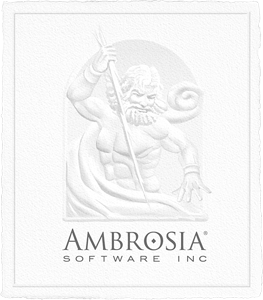
Ambrosia Software was a predominantly Macintosh software company founded in 1993 and located in Rochester, New York, U.S. Ambrosia Software was best known for its Macintosh remakes of older arcade games, which began with a 1992 version of Atari, Inc.'s Asteroids from 1979. The company also published utility software. Its products were distributed as shareware; demo versions could be downloaded and used for up to 30 days. Later the company released some products for iOS. Ambrosia's best-selling program was the utility 'Snapz Pro X', according to a 2002 interview with company president Andrew Welch.

Dynamite Headdy is a platform video game developed by Treasure and published by Sega for the Sega Genesis in 1994. The game follows a puppet named Headdy in his efforts to stop an evil puppet king from taking over his world. Headdy can throw his head at enemies to defeat them and use it to pull himself to various areas and move objects. The player can find a wide variety of "heads" which act as power-ups that provide different effects and alter gameplay.
Michael Jackson's Moonwalker is the name of several video games based on the 1988 Michael Jackson film Moonwalker. Sega developed two beat 'em ups, released in 1990; one released in arcades and another released for the Sega Genesis and Master System consoles. U.S. Gold also published various games for home computers the same year. Each of the games' plots loosely follows the "Smooth Criminal" segment of the film, in which Jackson rescues kidnapped children from the evil Mr. Big, and incorporates synthesized versions of some of the musician's songs. Following Moonwalker, Jackson collaborated with Sega on several other video games.

Maelstrom is a video game developed by Andrew Welch, released as shareware in November 1992 for Mac OS. The game is an enhanced clone of Atari, Inc.'s 1979 Asteroids arcade game with a visual style similar to the Atari Games 1987 sequel, Blasteroids. Maelstrom was released when there were few action games for the high-resolution color displays of the Macintosh, so it garnered much interest, despite the dated concept, and led to the creation of Ambrosia Software.

Enemy Territory: Quake Wars is a first-person shooter video game developed by Splash Damage and published by Activision for Microsoft Windows, Linux, Mac OS X, PlayStation 3 and Xbox 360. The game was first released in the PAL region on September 28, 2007, and later in North America on October 2. It is a spinoff of the Quake series and the successor to 2003's Wolfenstein: Enemy Territory.
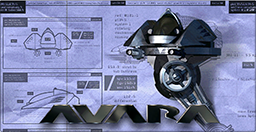
Avara is a 1996 first-person shooter written by Juri Munkki for Macintosh and published by Ambrosia Software. A fast 3D engine, integrated Internet play, and easy level editing were notable features at the time of its release. While not commercially successful, the game found a cult following. Munkki publicly released the source code in 2016, the game's 20th anniversary.
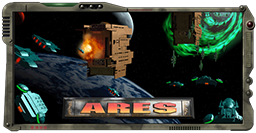
Ares is a space strategy video game created by Nathan Lamont of Bigger Planet Software, and first released by Changeling Software in 1998. In 1999 the game was re-released as shareware by Ambrosia Software and released as open source software and freeware in 2008. The key feature of the game was its ability to zoom in and out smoothly; this allowed the player to switch between a close-up view, which emphasized space combat skills, and a strategic view of the entire map.
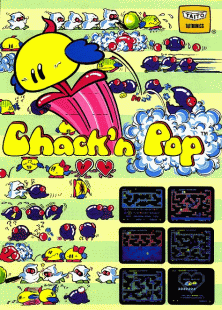
Chack'n Pop is an platform arcade game developed and released by Taito in 1984. In the game, the player controls a small yellow creature, Chack'n, with the objective being to retrieve hearts from a cave, all while avoiding the enemies contained within them. Chack'n also has the ability to deploy bombs, which can kill said enemies, which can bring bonuses depending on if the all or none of the enemies have been killed.

Redline is a video game for Mac OS X developed by Jonas Echterhoff and published by Ambrosia Software. The game's primary features are its ability to simulate actual racing physics, online play, and support for the addition of third party content via plug-ins. The combination of these features have attracted numerous players and led to the creation of a seasonal racing league. Redline also has several modes of gameplay for those who prefer arcade style physics commonly found in other racing games. The game is now currently obsolete and an error message will be displayed upon opening the application as of OS X Snow Leopard and above. However, a fan-made patch allows the game to run on OS X Mavericks and above, but in single-player modes only.

Pang , originally released in Japan as Pomping World and known in North America as Buster Bros., is a 1989 action game released by Mitchell Corporation for arcades in 1989. It was the tenth game released for Capcom's CP System arcade hardware.

Toki Tori is a puzzle video game with platform elements, released by Capcom in September 2001 for the Game Boy Color. It was developed by Dutch video game development company Two Tribes and is their first published video game. The game follows a young chick, Toki Tori, and his quest to rescue his younger siblings, still in their eggs. To progress through the game, the player must pick up each egg on a level using a set number of tools, with new tools being introduced as the player progresses through the four worlds. This usually involves careful planning and creative thinking.

Pillars of Garendall is a role-playing video game that was built by Beenox Studios and Ambrosia Software. It was built using the Coldstone game engine, which was also a joint Beenox/Ambrosia project. The game was released in 2001 for Mac OS Classic, Microsoft Windows and Mac OS X.

Pharaoh's Tomb is an MS-DOS platform game created by George Broussard and published by Apogee Software.

Jawbreaker is a port of SameGame for the Pocket PC bundled with the Microsoft Windows Mobile 2003 operating system for PDAs. The operating system, and thus the game, was officially released on April 7, 2003. The game itself was developed by American studio oopdreams software, Inc. Jawbreaker is officially listed as one of the "Core Applications" of the Windows Mobile software family, in a paper released by Microsoft. In Windows Mobile 5.0 and Windows Mobile 6.0 it is called Bubble Breaker. The original non-bundled version of the game is available from the developer itself as Bubblets.
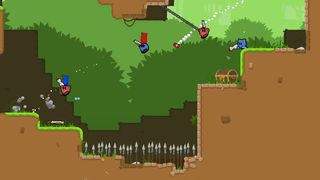
Teeworlds is a free, open-source sidescrolling multiplayer shooting game originally created by Swedish developer Magnus Auvinen and now maintained by the community. It features simple cartoon-themed graphics and physics and relies heavily on classic shooter weaponry and gameplay. Currently there are official versions for Microsoft Windows, Linux, macOS and it has been available via digital distributor Steam since 2015. The source code is publicly available on github.


















